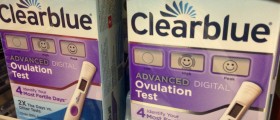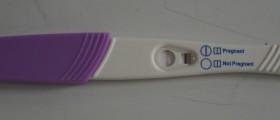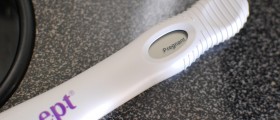
The Clear Blue system can be set on the day of a woman's period to remind her when to test for her most fertile days. The manufacturers of the test kit claim that it works for women who have menstrual cycles as short as 21 days to as long as 42 days, although women who recently have come off the Pill should wait for two menstrual cycles to pass before they use the test. What issues do couples have with Clearblue Fertility Monitors? The most common response to customer service surveys seems to be that users forget that the machine has to be set during the first five days of a woman's period. That is so expensive test sticks won't be used on days it is highly unlikely that the woman is pregnant. The test also requires testing with the first urine of the day, so if a woman usually gets up at 7 a.m. but needs to go to the bathroom at 5 a.m., the test would have to done at 5 a.m.
Urine samples take later in the day have lower levels of hormones and are less likely to test positive, that is, opportunities to conceive can be missed if the urine sample is not taken from the first urine of the morning. A special precaution is necessary for women who have PCOS, or who may have polycystic ovaries without PCOS or undiagnosed PCOS. Some women are "slow" ovulators. Their hormone levels may indicate a peak fertility, for example, on day 16 of their period, but the egg may not actually be released from the ovary until day 17 or 18. For these women, it's important to keep trying at least one or two days past the peak indicated by the machine readings for maximum chances of getting pregnant.
















Your thoughts on this
Loading...